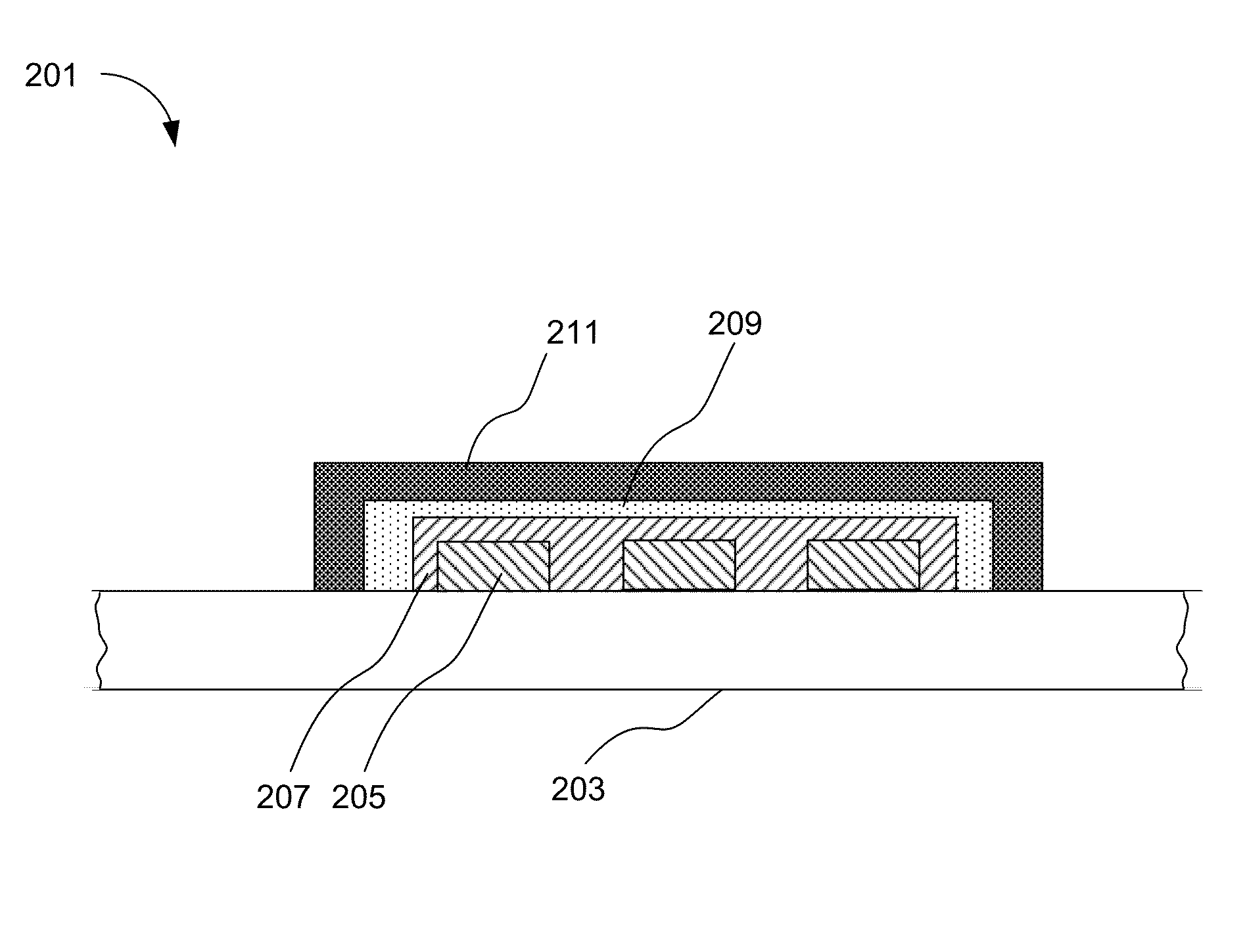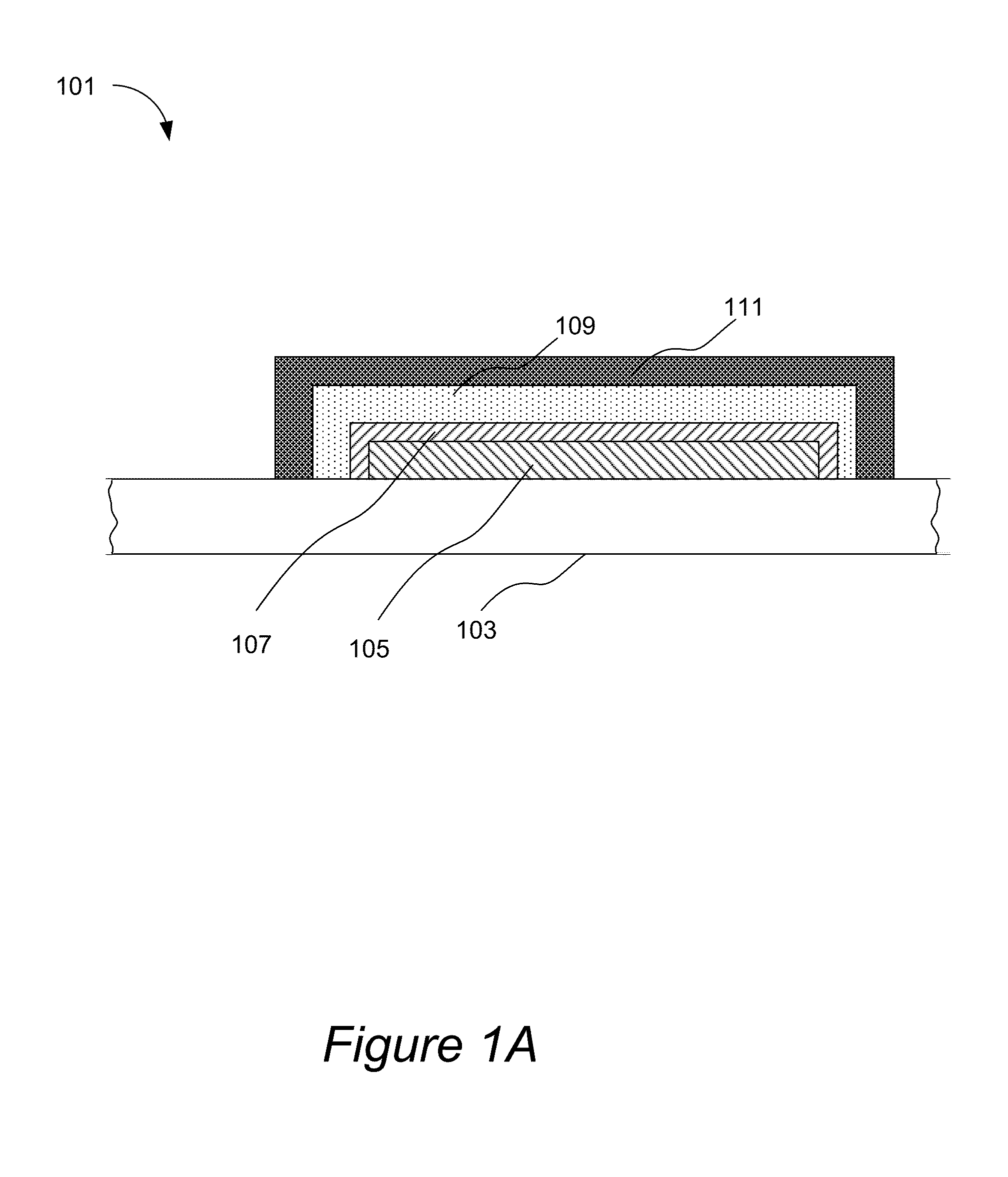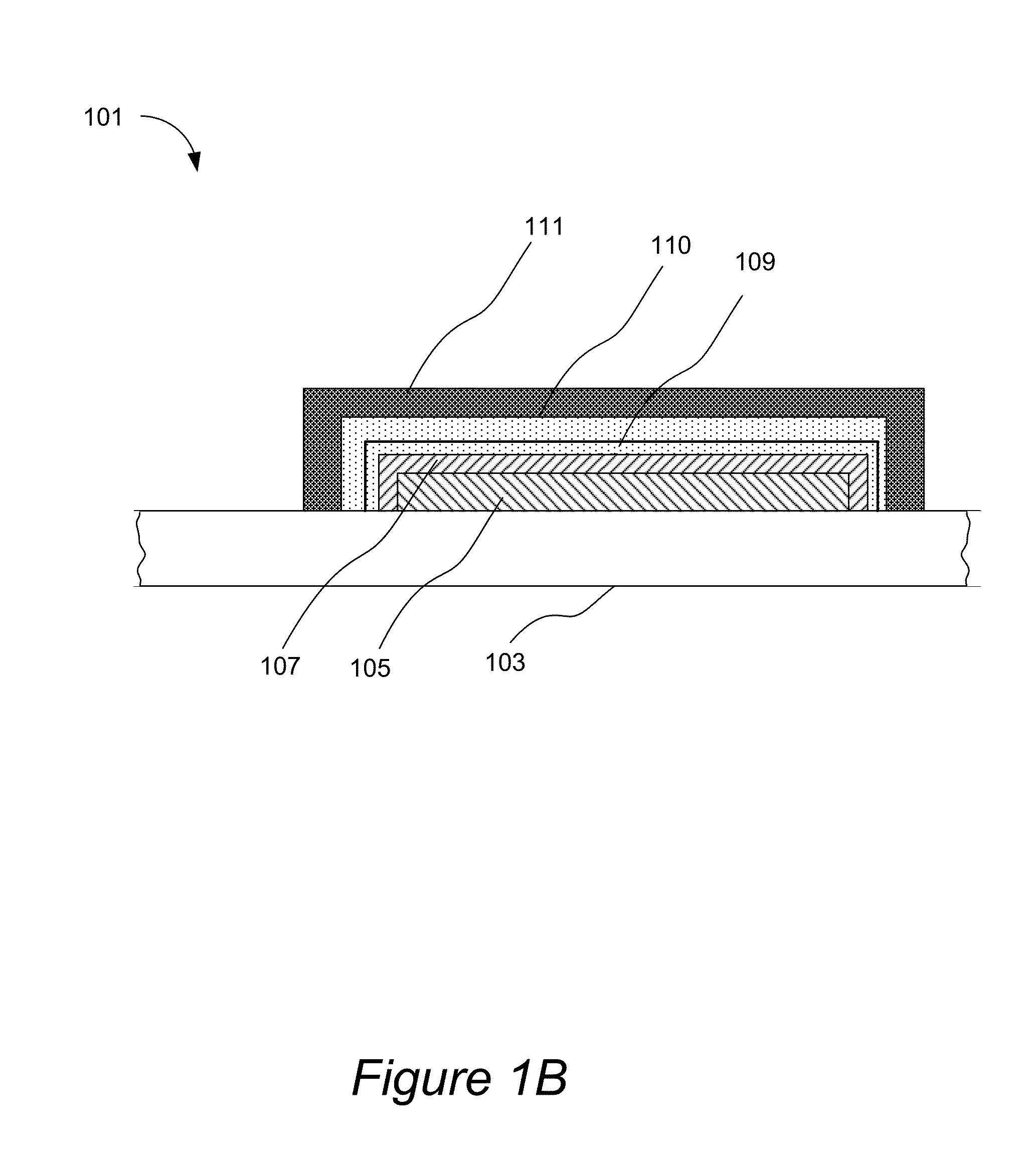Two-terminal electronic devices and their methods of fabrication
a technology of electronic devices and terminals, applied in the direction of thermoelectric devices, solid-state devices, radiation controlled devices, etc., can solve the problems of increasing the high cost of pvd and cvd apparatuses, and high cost of electronic device fabrication, so as to improve device mechanical properties, less expensive processing, and improve device storage time and stability in operation
- Summary
- Abstract
- Description
- Claims
- Application Information
AI Technical Summary
Benefits of technology
Problems solved by technology
Method used
Image
Examples
example 1
[0153]In accordance with one example, a UV detector is provided which has the following structure: M / MO / p-type semiconductor / TCO. In some embodiments the metal, M, is Ti, Ta, Zn, In, Sn, or Ga. The I-layer is a metal oxide layer, where the oxide is formed in a self-aligned manner from the top portion of the first electrode by oxidation which can be achieved by annealing the metal in O2 environment, by treating the metal with O2 plasma, by anodization of the metal, or by heating the metal and contacting it with H2O2, or by a combination of the processes listed above In those cases where metal oxide is formed by a dry process (e.g., O2 plasma, heating in O2-contained environment) or by a wet process (e.g., by anodization, or hydrogen peroxide treatment), the surface of the oxide may be cleaned, e.g., with a water rinse and is then dried. A p-type organic or inorganic layer or both in stack or in a blend form is then deposited on the clean dry surface of metal oxide. Example...
example 2
Broadband NIR / Visible Light Photodetectors and Photovoltaic Cells
[0157]When narrow energy gap semiconductor is used in the semiconductor layer, absorption is shifted to longer wavelengths. IR and / or visible light photodetectors can be built. These devices can also be used as photovoltaic devices.
[0158]The bottom electrode layer is a metal layer. In some embodiments the metal is Ti, Ta, Zn, In, Sn, or Ga. The I-layer is a metal oxide layer, where the metal is the same metal as used for the first electrode. The semiconductor layer can be organic or inorganic p-type semiconductor, or an organic / inorganic blend, or a stack. Examples of suitable materials include PPV, MEHPPV, P3HT, PCPDTBT, PDDTT, CuO, PbS, CuInSe, CuInS, CuInGaSe. Such devices can be used as single detectors but are especially suitable for detector arrays due to simplicity of their manufacturing process and high process yield. In the array devices, the sensor pixel can be defined by the bottom metal pattern, the remaini...
example 3
Visible / Near-Infrared (NIR) Detector Array with an Unpatterned Semiconductor Layer
[0163]In this example, the bottom electrode was made with a 100 nm thick ITO or a 100 nm thick Ag layer by DC sputtering, which was then patterned by lithography to define individual devices. Titanium oxide I-layer was formed by DC sputtering of titanium metal layer with nominal thickness of 10 or 50 Anstrong, and then the unpatterned Ti layer was oxidized to TiO2 by thermal oxidation at 200° C. A blend polymer semiconductor comprising either PTB7:PC70BM or PCPDTBT:PC70BM (1:2 weight ratio, purchased from 1-Materials, Dorval, Quebec, Canada) was coated from a blend solution at room temperature over the I-layer and was then dried at 150° C. for 30 minutes to remove residual solvent. Toluene and chlorobenzene were used for as solvent for this study. The thickness of this layer (referred to as a sensing layer or the first semiconductor sub-layer) was approximately 200 nm. It is an organic semiconductor wi...
PUM
| Property | Measurement | Unit |
|---|---|---|
| Band gap | aaaaa | aaaaa |
| Work function | aaaaa | aaaaa |
| Ratio | aaaaa | aaaaa |
Abstract
Description
Claims
Application Information
 Login to View More
Login to View More - R&D
- Intellectual Property
- Life Sciences
- Materials
- Tech Scout
- Unparalleled Data Quality
- Higher Quality Content
- 60% Fewer Hallucinations
Browse by: Latest US Patents, China's latest patents, Technical Efficacy Thesaurus, Application Domain, Technology Topic, Popular Technical Reports.
© 2025 PatSnap. All rights reserved.Legal|Privacy policy|Modern Slavery Act Transparency Statement|Sitemap|About US| Contact US: help@patsnap.com



